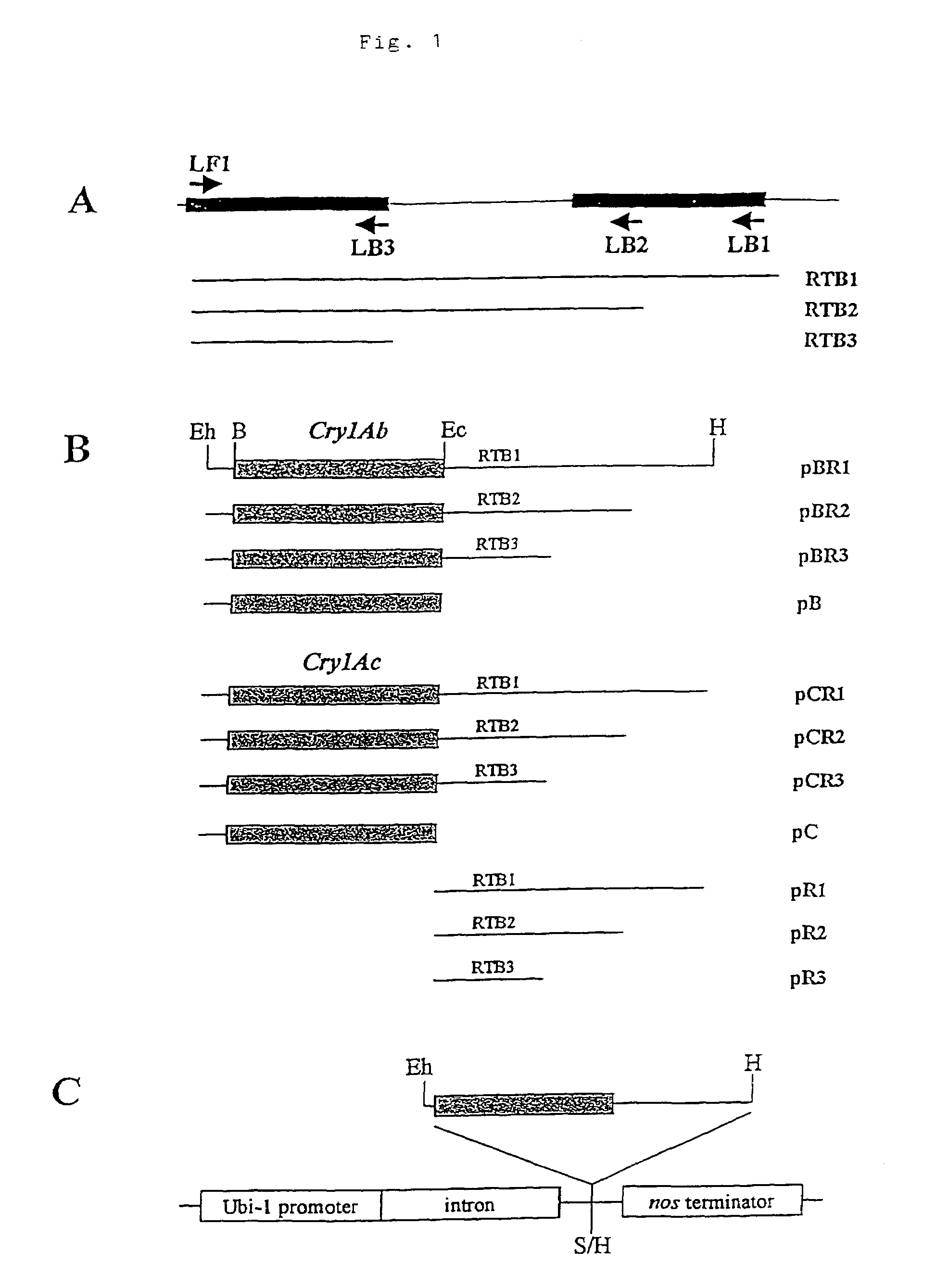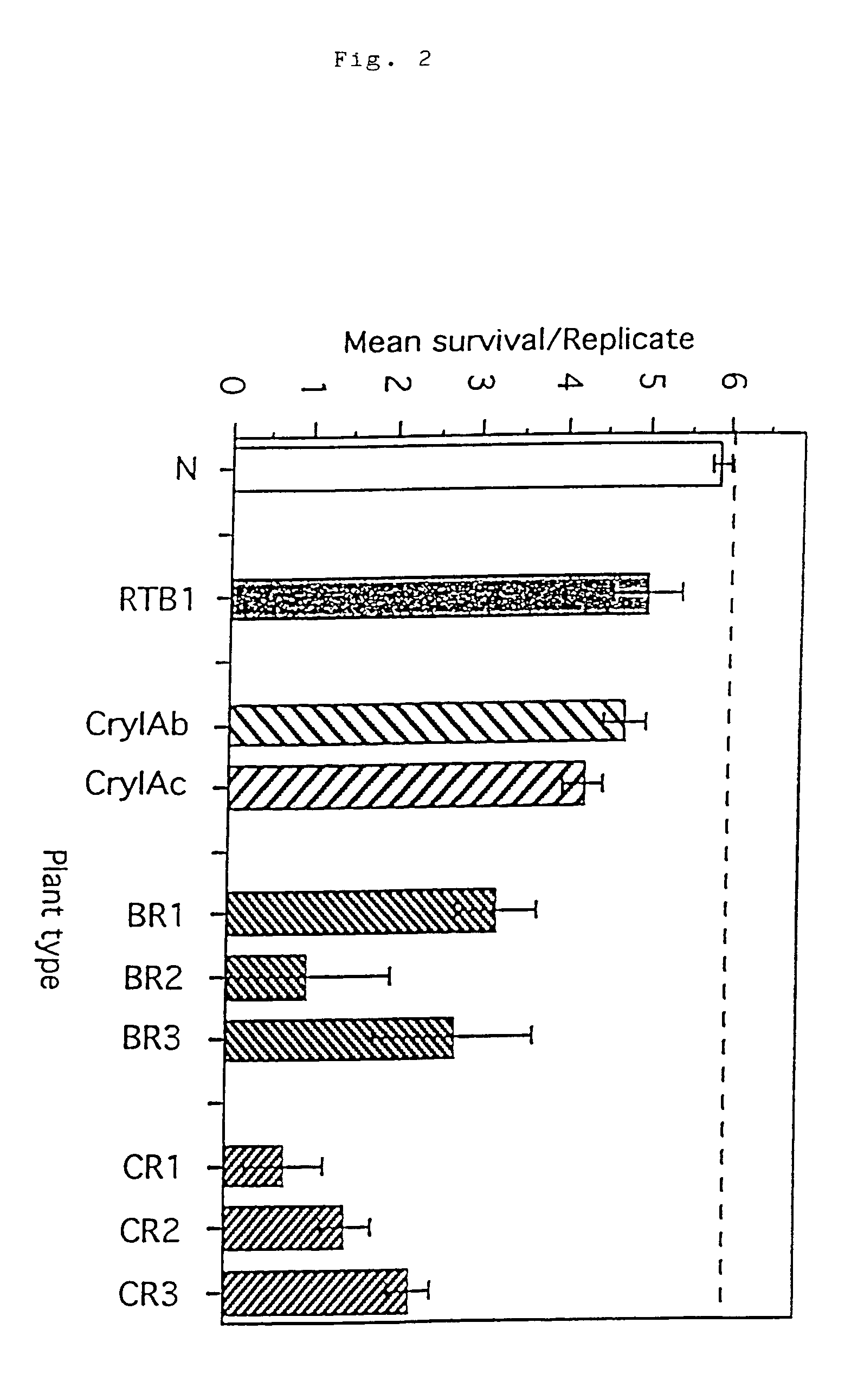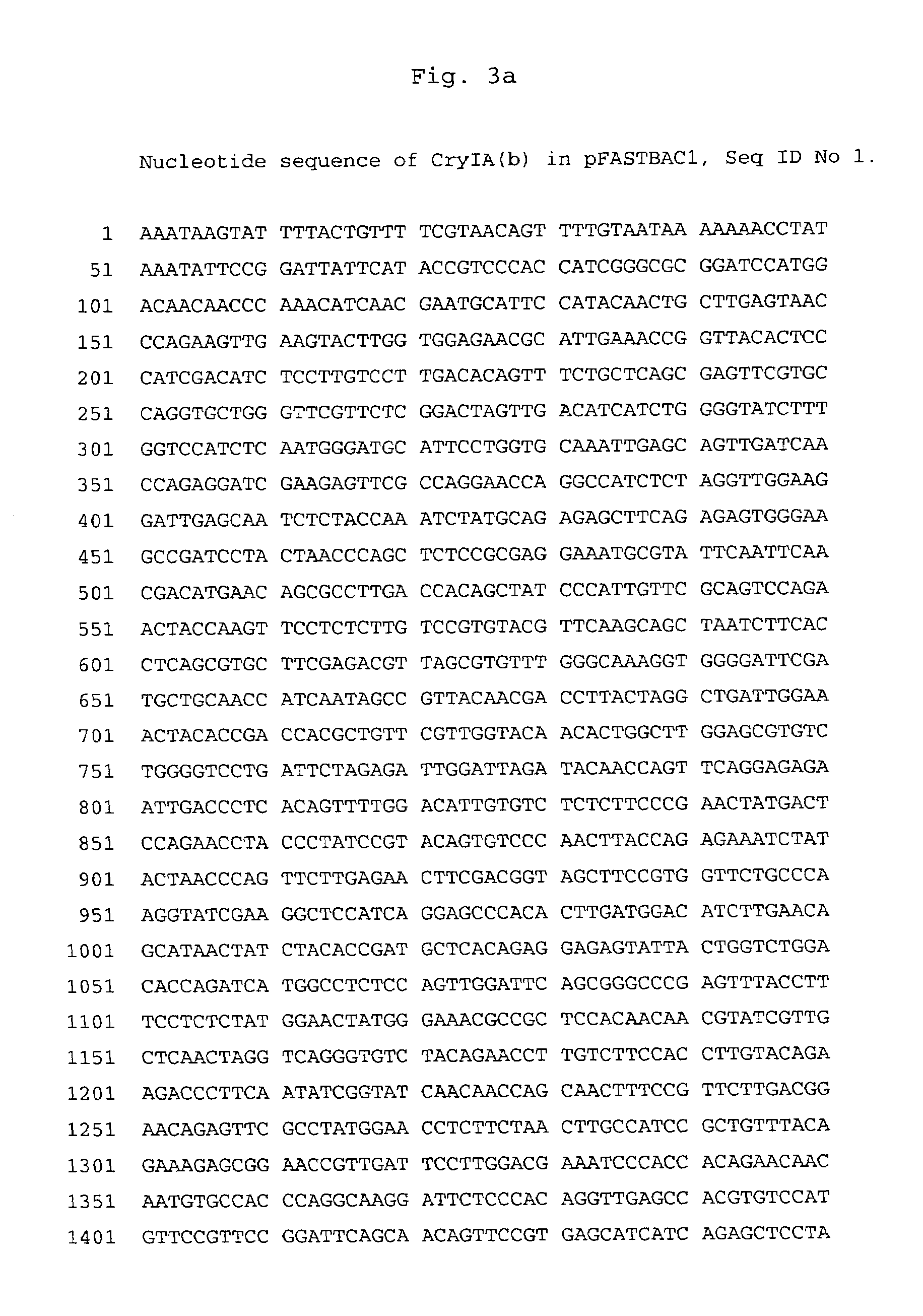Pesticidal fusions
a technology of fusion polypeptides and pesticidal fusion, which is applied in the field of fusion polypeptides, can solve the problems that the strategy may not give improved properties as regards possible resistance, and achieve the effect of enhancing the effect of the toxin portion
- Summary
- Abstract
- Description
- Claims
- Application Information
AI Technical Summary
Benefits of technology
Problems solved by technology
Method used
Image
Examples
example 1
[0133]Site directed mutagenesis of ricin toxin B chain gene. Four mutagenic oligonucleotides were used in PCR reactions to create an EcoRI and a HindIII restriction site at selected positions along the ricin toxin B chain gene in the plasmid pWT (Wales et. al., 1991)—these are shown in FIG. 1A. The five mutagenic oligonucleotides (mutated bases underlined) were:[0134]LF1=5′ CAACAACAAAGGAATTCATGCTGATG 3′ (Seq ID No 12)[0135]LB1=5′ GGACACACACACTGCAAGCTTGTAATC 3′ (Seq ID No 13)[0136]LB2=5′ CGGATCCGAAAGCTTCACATCTAACAC 3′ (Seq ID No 14)[0137]LB3=5′ GCTTGCAAGCTTAGACCATATAGCCC 3′ (Seq ID No 15)
[0138]PCR mutagenesis was carried out in a 50 ml total volume containing 1×PCR buffer (Boehringer Mannheim), 200 mM each dNTP, 15 mM MgCl2, 300 nM each primer, 2.6 units enzyme mix (Boehringer Mannheim) and 70 ng pBWT plasmid DNA. After an initial denaturation step at 94° C. for 2 min, 10 fixed amplification cycles were carried out (94° C., 15 s; 65° C., 30 s; 72° C., 1 min) ...
example 2
Preparation of Fusion in Baculovirus Vector
Overview of Baculovirus System
[0140]The insect baculoviruses Autographa californica (Ac) and Bombyx mori nuclear polyhedrosis viruses (MNPV) had previously been shown to be versatile high level expression vectors of heterologous proteins (6, 7, 13, 17). This is mainly due to the unique nature of the baculovirus replication cycle, which involves the sequential expression of virus encoded genes in four, temporary distinct phases (2, 7, 10, 18). The first three stages result in the production of infectious virus particles which invade other cells and therefore disseminate infection. In the final, very late phase of gene expression, starting at about 18 hours post infection, virus particles are occluded into crystalline proteinacious structures called polyhedra (7). The polyhedrin gene is dispensable for the production of virus particles and can be replaced with foreign coding sequences (7, 27). Because the polyhedrin gene is expressed in the l...
example 3
Production of Host Cells Expressing Pesticidal Fusion Polypeptide
[0148]Transfection of Sf21 insect cells with recombinant bacmid DNA. One million Sf21 insect cells were seeded in a 35 mm cell culture plate overnight in 2 mls of TC-100 media supplemented with 10% fetal calf serum. The cells were washed two times with serum and antibiotic free media and overlain with one ml of the transfection mix (5 microliters recombinant bacmid DNA, 800 μl serum and antibiotic free TC-100 media and six microliters cellfectin) for five hours (37). After removal of the transfection mix the cells were then covered with complete TC-100 media (supplemented with 10% fetal calf serum) for 48 hours. The virus was harvested (first inoculum) in the supernatant and the cells overlain for a further 48 hours with two milliliters of complete media and the virus was harvested (second inoculum). The second supernatant was used as an inoculum in experiments to determine the optimum time of expression of the protein...
PUM
| Property | Measurement | Unit |
|---|---|---|
| Tm | aaaaa | aaaaa |
| diameter | aaaaa | aaaaa |
| concentration | aaaaa | aaaaa |
Abstract
Description
Claims
Application Information
 Login to View More
Login to View More - R&D
- Intellectual Property
- Life Sciences
- Materials
- Tech Scout
- Unparalleled Data Quality
- Higher Quality Content
- 60% Fewer Hallucinations
Browse by: Latest US Patents, China's latest patents, Technical Efficacy Thesaurus, Application Domain, Technology Topic, Popular Technical Reports.
© 2025 PatSnap. All rights reserved.Legal|Privacy policy|Modern Slavery Act Transparency Statement|Sitemap|About US| Contact US: help@patsnap.com



